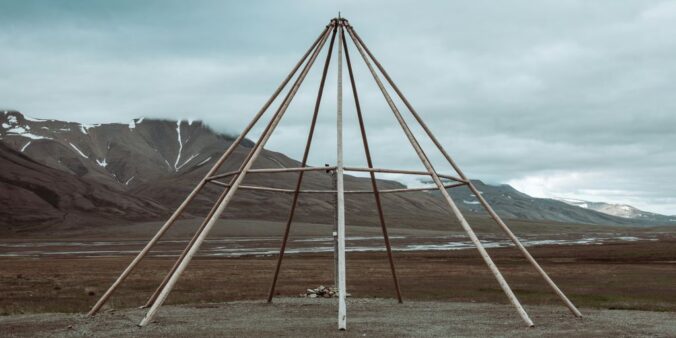Essentially, stealth camping is the act of setting up camp in a location that’s not designated for camping and remaining undetected. The purpose of stealth camping is to achieve free camping and to have a more secluded and off-grid camping experience, but it can be a challenging experience. So, let’s get into our ultimate guide!
Key Takeaways
- Stealth camping involves setting up camp in non-designated areas and staying undetected.
- Essential gear for stealth camping includes a lightweight tent, sleeping bag, camping stove, emergency first-aid kit, and waste removal equipment.
- Skills like navigation, survival techniques, and Leave No Trace principles are crucial for a successful stealth camping experience.
- Stealth van camping is popular for urban settings and requires specific setup and tips to remain undetected.
- Always ensure you are camping in a legal location to avoid potential issues.
Understanding Stealth Camping

What is Stealth Camping?
Stealth camping is fairly similar to wild camping, and it entails setting up a camp in a well-hidden area to avoid detection. Essentially, stealth camping is the act of setting up camp in a location that’s not designated for camping and remaining undetected. The purpose of stealth camping is to achieve free camping and to have a more secluded and off-grid camping experience, but it can be a challenging experience. The essence of stealth camping lies in its name – it’s all about being stealthy, blending into your surroundings and leaving no trace of your presence once you move on.
Types of Stealth Camping
There are a couple of different types of stealth camping that you can engage in. One is much more popular in the UK, but both are equally considered to be stealthy and allow you to avoid costly campsite fees.
- Tent Stealth Camping: This involves setting up a small, inconspicuous tent in a hidden location.
- Vehicle Stealth Camping: This involves sleeping in your vehicle, often in urban areas, without drawing attention.
Is Stealth Camping Legal?
The legality of stealth camping varies greatly depending on the location. In some areas, it is completely legal, while in others, it is strictly prohibited. It’s important to research and understand the local laws and regulations before you decide to stealth camp. But remember, you should always camp in a legal location.
Stealth camping, with its emphasis on seclusion and minimal environmental impact, is an adventure that requires careful preparation and a set of specific skills. Not only are navigational and survival skills crucial, but adherence to the ‘Leave No Trace’ principles are paramount. Remember, the key to successful stealth camping is packing smart and staying as lightweight as possible.
Essential Gear for Stealth Camping

When it comes to stealth camping, having the right gear is crucial. There’s a lot of crossover with traditional camping gear, but since stealth camping entails staying off-grid and out of sight, some additional items may come in handy.
Lightweight Shelter Options
A lightweight tent is essential for stealth camping. It should be easy to set up and take down quickly. Consider options like bivy sacks or hammocks with tarps for even more discreet setups.
Must-Have Camping Tools
Your camping life will be much easier with the right tools. A camping stove is vital for cooking without drawing attention. Don’t forget an emergency first aid kit and high-energy food to keep you going. Tools like a compass, fire starter, and survival instructions can be crucial.
Food and Waste Management
Managing food and waste is critical in stealth camping. Use high-calorie food that is easy to prepare and doesn’t require refrigeration. Always pack out what you pack in to leave no trace. Consider using portable waste bags for easy disposal.
Remember, the key to successful stealth camping is to blend in with your surroundings and leave no trace.
Choosing the Perfect Stealth Camping Location
Selecting the right location is crucial for a successful stealth camping experience. A well-chosen spot ensures you remain hidden and undisturbed throughout your stay. Here are some tips to help you find the perfect stealth camping location.
Finding Hidden Spots
Look for a secluded area that’s nestled amidst a lush canopy of trees or dense bushes. This ensures it remains hidden from view and completely shielded from any nearby paths or trails. The goal is to be invisible to anyone who might be walking past.
Evaluating Ground Conditions
Ensure the ground is level and free of obstructions like rocks or roots. This not only makes for a more comfortable sleeping surface but also helps in setting up your shelter securely. Check for any signs of water pooling, as you want to avoid areas that might flood if it rains.
Considering Nearby Resources
Having access to nearby resources can make your camping experience more comfortable. Look for spots that are close to a water source, but not too close to avoid attracting wildlife. Additionally, consider the availability of natural materials for shelter building or firewood collection.
Remember, the key to a successful stealth camping trip is to blend in with your surroundings and leave no trace behind.
Skills Needed for Stealth Camping

Stealth camping is a unique form of camping that requires a distinct set of skills compared to traditional camping. Mastering these skills can make your stealth camping experience both safe and enjoyable.
Stealth Van Camping for Beginners

What is Stealth Van Camping?
Stealth van camping is the practice of sleeping in your van or another vehicle without drawing attention to the fact that someone is inside. This is different from traditional camping where you set up camp and spend time outside your vehicle. For stealth van camping, you’ll want to minimize noise and light inside, and avoid stepping outside. Arrive after dark and leave before first light to maintain a low profile.
Setting Up Your Van for Stealth
To set up your van for stealth camping, consider the following tips:
- Choose the right vehicle: A converted van is most commonly used, but a camper van can also work.
- Window coverings: Use blackout curtains or shades to prevent light from escaping.
- Soundproofing: Minimize noise by adding insulation and using quiet appliances.
- Ventilation: Ensure proper airflow without compromising your stealth.
Tips for Urban Stealth Camping
Urban stealth camping involves parking overnight in cities without being noticed. Here are some tips to help you blend in:
- Park in inconspicuous locations: Residential streets, industrial areas, and large parking lots can be good options.
- Avoid staying in one spot for too long: Move your vehicle regularly to avoid drawing attention.
- Keep your van clean and well-maintained: A tidy appearance helps you blend in with other vehicles.
- Be mindful of local regulations: Some areas have strict rules about overnight parking, so always check the local laws.
Stealth van camping can be a cost-effective way to explore new places and enjoy the freedom of the open road. With the right preparation and mindset, you’ll have an unforgettable experience.
Remember, the key to successful stealth van camping is to blend in with your surroundings, not to hide completely. Happy camping!
Top Tips for a Successful Stealth Camping Experience
Stealth camping can be an exhilarating way to connect with nature while avoiding crowded campsites. Here are some camp tips to ensure your experience is both enjoyable and discreet.
For those looking to master the art of stealth camping, our latest article, ‘Top Tips for a Successful Stealth Camping Experience,’ is a must-read. Discover essential strategies and gear recommendations to ensure your next adventure is both thrilling and safe. Don’t miss out on expert advice that can make all the difference. Visit our website to read the full article and elevate your camping game today!
Conclusion
Stealth camping offers a unique and rewarding way to connect with nature while enjoying the thrill of staying hidden and undetected. By following the tips and guidelines outlined in this guide, you can ensure a safe, enjoyable, and environmentally responsible stealth camping experience. Remember to always prioritize safety, respect the environment, and adhere to the ‘Leave No Trace’ principles. Whether you’re a seasoned camper or a beginner, stealth camping can add a new dimension to your outdoor adventures. So pack your gear, plan your trip, and embark on an unforgettable stealth camping journey!
Frequently Asked Questions
What is stealth camping?
Stealth camping is the act of setting up camp in a location that’s not designated for camping and remaining undetected. The purpose is to achieve free camping and have a more secluded and off-grid experience.
Is stealth camping legal?
The legality of stealth camping varies by location. It’s important to research and ensure you are camping in a legal location to avoid fines or other legal issues.
What gear do I need for stealth camping?
Essential gear includes a lightweight tent, warm sleeping bag, camping stove, emergency first-aid kit, high-energy food packs, and waste removal equipment. Additional tools like a compass, fire starter, and survival instructions can also be crucial.
What are the ‘Leave No Trace’ principles in stealth camping?
The ‘Leave No Trace’ principles involve minimizing your environmental impact by cleaning up all waste, avoiding damage to vegetation, and leaving the area as you found it. This ensures the natural environment remains pristine for future campers.
How do I choose a location for stealth camping?
When choosing a location, look for hidden spots that are secluded and shielded from view. Ensure the ground is level and free of obstructions, and consider nearby resources like water sources.
What is stealth van camping?
Stealth van camping involves setting up a campervan in a way that allows you to camp overnight without drawing attention. This is common in urban areas but can also apply to public land outside cities.


Leave a Reply